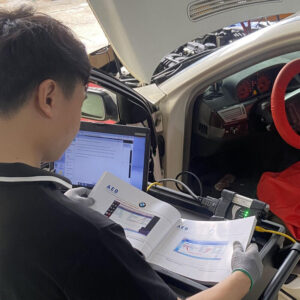
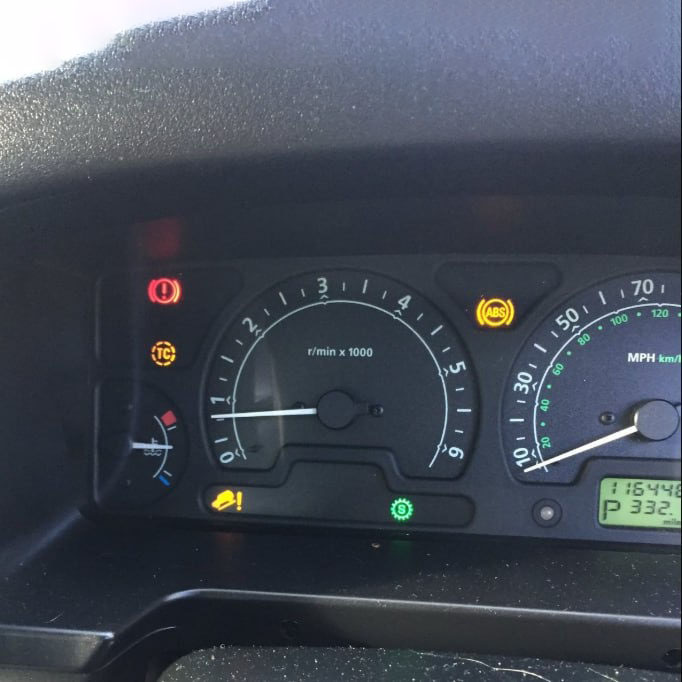
How to Fix P1590 Land Rover Error Code
Contents
The P1590 code in Land Rover vehicles is related to the Anti-lock Braking System (ABS). Nearly 90% of vehicle owners do not recognize or repair this issue in time, posing a serious safety risk on the road. Understanding the cause of this problem and learning how to fix it will help you save time and money. In this guide, AutoExplain’s technical experts will provide insights into the P1590 fault code and how to resolve it effectively.
1. What is the P1590 Land Rover Code?
P1590 is a diagnostic trouble code (DTC) that occurs in the ABS system of Land Rover vehicles. P1590 is the error message from ABS control unit about Antilock brake system (ABS) rough road signal. It must be diagnosed and cleared before replacing any components in the system.
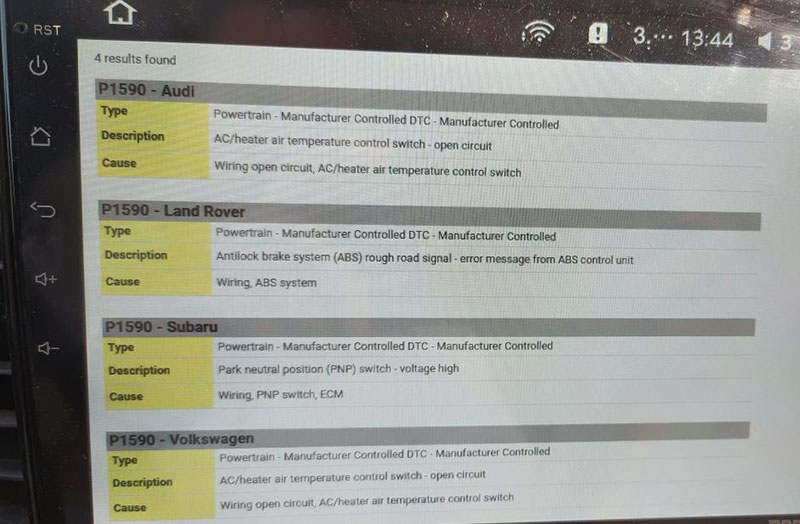
1.1. Symptoms of P1590 in Land Rover
When the ABS system in your Land Rover encounters a problem indicated by the P1590 Land Rover Fault Code, several telltale signs might become apparent. Recognizing these symptoms early can help you address the issue promptly and prevent potential safety hazards. Here are the common indicators associated with the P1590 error:
-
Check Engine Light (CEL) or ABS Warning Light Illumination: This is often the first and most noticeable sign. The vehicle’s onboard computer detects an anomaly in the ABS system and activates either the Check Engine Light, the dedicated ABS warning light, or both on your dashboard. This serves as a clear indication that something within the braking system requires attention.
-
Compromised Braking Efficiency, Particularly on Uneven Terrain: One of the primary functions of the ABS is to maintain optimal braking force and prevent wheel lock-up, especially on slippery or rough surfaces. When the P1590 error is present, you might experience a noticeable reduction in braking effectiveness, particularly when driving over bumps, gravel, or other irregular road conditions. The ABS may not engage as expected, potentially leading to longer stopping distances or a feeling of instability during braking.
-
Presence of Additional UXXXX Communication Error Codes: The sophisticated electronic systems in modern vehicles, including Land Rovers, rely on seamless communication between various control units. A P1590 error within the ABS system can sometimes be accompanied by other diagnostic trouble codes that begin with a “U,” such as U0121 (Lost Communication With Anti-Lock Brake System (ABS) Control Module). These U codes indicate disruptions in the communication network within the vehicle, often stemming from or related to the primary ABS fault.
-
Vehicle Entering Limp Mode: In some instances, when critical systems like the ABS detect a significant malfunction, the vehicle’s computer might initiate a “limp mode” or reduced power mode. This is a safety mechanism designed to limit the vehicle’s speed and functionality, encouraging the driver to seek immediate service. While not always triggered by P1590, it’s a possibility, especially if the ABS issue is severe or impacting other interconnected systems.
Encountering any of these symptoms should prompt you to investigate the underlying cause, which could very well be the P1590 Land Rover OBD2 Code. Ignoring these warning signs can have serious implications for your safety and the longevity of your vehicle’s braking system. Timely diagnosis and repair are crucial.
1.2. Common Causes of the P1590 Code
The P1590 Land Rover Check Engine Light Code arises when the ABS control unit detects inconsistencies or implausible data regarding the rough road signal. Pinpointing the exact cause requires a systematic approach to diagnosis. AutoExplain’s experts have identified several common factors that can trigger this fault:
-
Malfunctioning Wheel Speed Sensors: The wheel speed sensors are pivotal components of the ABS, responsible for transmitting real-time data about the rotational speed of each wheel to the ABS control unit. If one or more of these sensors are faulty, dirty, damaged, or misaligned, they can send incorrect or erratic signals. These inaccurate readings can lead the ABS control unit to misinterpret the road conditions, including the rough road signal, thereby triggering the P1590 code.
-
Defective ABS ECU (Electronic Control Unit): The ABS ECU serves as the brain of the ABS system, processing the information received from the wheel speed sensors and other inputs to control the hydraulic modulator and regulate braking force. If the ABS ECU itself is malfunctioning due to internal faults, electrical damage, or software corruption, it may misinterpret or generate incorrect rough road signals, leading to the P1590 error.
-
Wiring and Connection Issues: The electrical integrity of the ABS system is paramount for its proper operation. Corroded, damaged, or loose electrical wiring and connectors can disrupt the flow of signals between the wheel speed sensors, the ABS ECU, and other related components. These interruptions can result in the ABS control unit receiving faulty or incomplete information, potentially triggering the P1590 code. Specific attention should be paid to connectors C504 and ECM C637 (B), as issues at these points are known to cause this fault.
-
Open Circuit in Specific Wiring: A complete break, or open circuit, in the wiring between specific points, such as C637/34 (indicated by the wire color code RG, often referring to Red with a specific tracer) and C504/4 (also RG), can directly disrupt the transmission of the rough road signal. This lack of signal can be interpreted by the ABS ECU as an implausible condition, resulting in the P1590 error.
-
Grounding Problems: Proper grounding is essential for the stable and reliable operation of any electronic system in a vehicle. Poor or insufficient ground connections for the ABS system can lead to signal interference, voltage fluctuations, and other electrical anomalies that can affect the ABS control unit’s ability to accurately interpret the rough road signal, potentially causing the P1590 Land Rover Discovery P1590 Code.
-
Software Anomalies: Like any complex electronic system, the ABS control unit relies on software to function correctly. Outdated or corrupted ABS control software can sometimes lead to misinterpretations of sensor data or internal communication errors, which might manifest as a P1590 fault. Software glitches or inconsistencies can disrupt the normal processing of the rough road signal.
Understanding these potential causes is the first step towards effectively diagnosing and resolving the P1590 error in your Land Rover. A thorough inspection and systematic troubleshooting are necessary to pinpoint the exact culprit.
2. How to Fix P1590 Land Rover Code?
2.1. Tools Required
Software:
JLR Pathfinder (car models after 2016) or JLR SDD (Car models before 2016)
Tools:
JLR Mongoose (For JLR SDD software) or JLR Doip (For JLR Pathfinder)
2.2. Step-by-step Guide to Fix P1590 Error Code
Fixing the P1590 code depends on the root cause. Follow these steps to diagnose and repair the issue:
Step 1: Scan for Error Codes
- Use a professional OBD-II scanner such as Autel MaxiCOM MK808, Launch X431 to check for fault codes.
- Identify any additional ABS-related error codes that may indicate the underlying issue.
Step 2: Inspect Wheel Speed Sensors
- Check if the wheel speed sensors are dirty, damaged, or misaligned.
- Clean or replace the sensors if necessary.
Step 3: Examine Wiring and Connectors
- Inspect connectors C504 and ECM C637 (B) for loose or corroded pins.
- Repair or replace damaged wires between C637/34 (RG) and C504/4 (RG).
Step 4: Test the ABS Control Unit
- Perform a diagnostic check on the ABS module.
- If the ABS ECU is faulty, consider repairing or replacing it.
Step 5: Fix Electrical Grounds
- Ensure proper grounding for the ABS system.
- Clean and secure ground connections.
Step 6: Update or Reprogram the ABS Software
- If the fault is software-related, update or reprogram the ABS ECU using a Land Rover-compatible diagnostic tool like JLR SDD or Pathfinder.
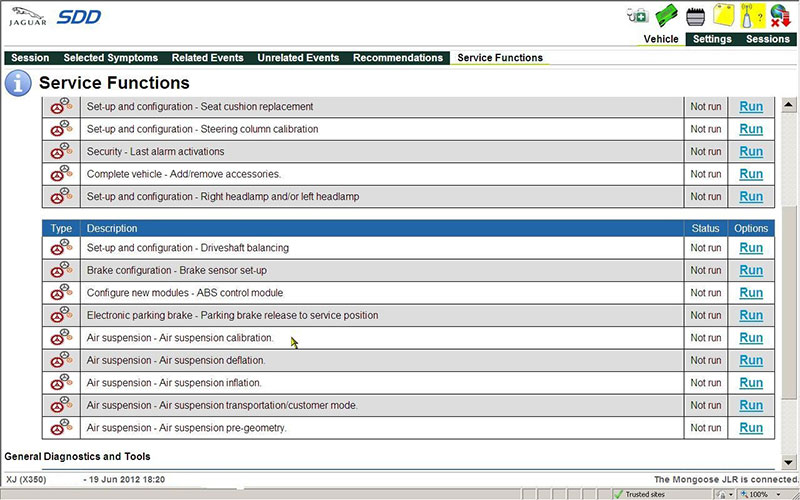
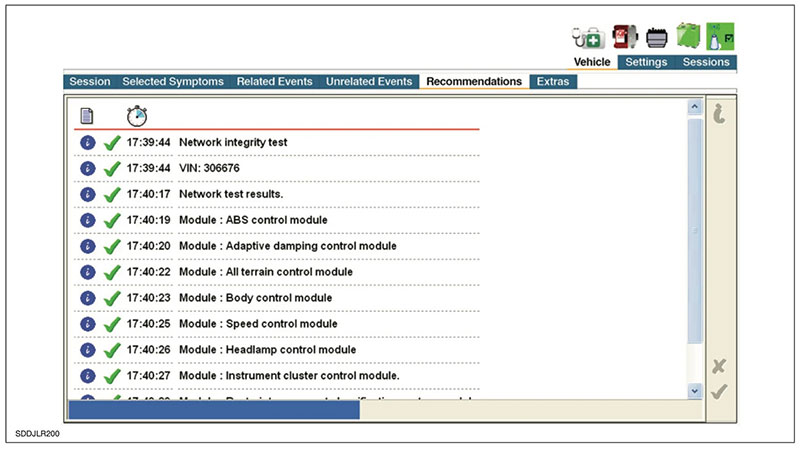
Step 7: Clear Error Codes and Test Drive
- Once repairs are complete, clear the P1590 code using an OBD-II scanner.
- Take the vehicle for a test drive to ensure the ABS system functions correctly.
If you need expert assistance with diagnosing, coding, or programming this error code, AutoExplain is here to help! Contact us via WhatsApp: +1(936)2896695 for expert advice and remote assistance.
3. How to prevent the P1590 Code in Land Rover
While addressing the P1590 Land Rover Error Code is crucial when it occurs, implementing proactive maintenance measures can significantly reduce the likelihood of this and other ABS-related issues from arising in the first place. AutoExplain recommends incorporating the following preventative tips into your regular vehicle care routine:
-
Regular Inspection and Cleaning of Wheel Speed Sensors: Make it a habit to periodically inspect your Land Rover’s wheel speed sensors for any signs of physical damage or excessive buildup of dirt, debris, or brake dust. Gently clean the sensors and their reluctor rings as needed. This simple step can help ensure accurate sensor readings and prevent malfunctions.
-
Routine Checks of ABS Wiring and Connectors: As part of your regular vehicle maintenance, visually inspect the wiring harnesses and connectors associated with the ABS system. Look for any signs of corrosion, fraying, damage, or loose connections. Ensure all connectors are securely fastened. Addressing any minor issues early can prevent more significant problems down the line.
-
Timely ABS Control Unit Software Updates: Modern vehicles, including Land Rovers, rely heavily on software. Ensure that the software for your ABS control unit is up to date. Check for available software updates through your dealership or a qualified independent repair shop equipped with the necessary diagnostic tools. Keeping the software current can address known bugs and improve system performance.
-
Periodic Diagnostic Scans: Even if you are not experiencing any apparent issues, consider performing periodic diagnostic scans of your Land Rover’s systems using an OBD-II scanner. This can help detect early warning signs or pending fault codes, including those related to the ABS, before they escalate into more significant problems or trigger warning lights.
-
Cautious Driving on Rough Terrain: While the P1590 code specifically relates to the rough road signal, minimizing harsh driving on extremely uneven surfaces can help reduce stress on the ABS system components, including the wheel speed sensors and wiring.
-
Prompt Attention to Any ABS Warning Lights or Symptoms: If you notice any ABS warning lights illuminating on your dashboard or experience any unusual braking behavior, address the issue promptly. Ignoring these signs can lead to more severe problems and potentially compromise your safety.
By incorporating these preventative measures into your Land Rover’s maintenance schedule, you can contribute to the long-term health and reliability of its ABS system and reduce the chances of encountering the P1590 code.
Need Professional Help with P1590?
If you need expert assistance with diagnosing and fixing the P1590 Land Rover fault code, AutoExplain is here to help! We provide professional support for car diagnostics, coding, and programming. Contact us via WhatsApp: +1(936)2896695 for expert advice and remote assistance.
By addressing the P1590 code promptly, you can ensure your vehicle’s braking system operates safely and effectively. Don’t wait—get in touch with AutoExplain today!

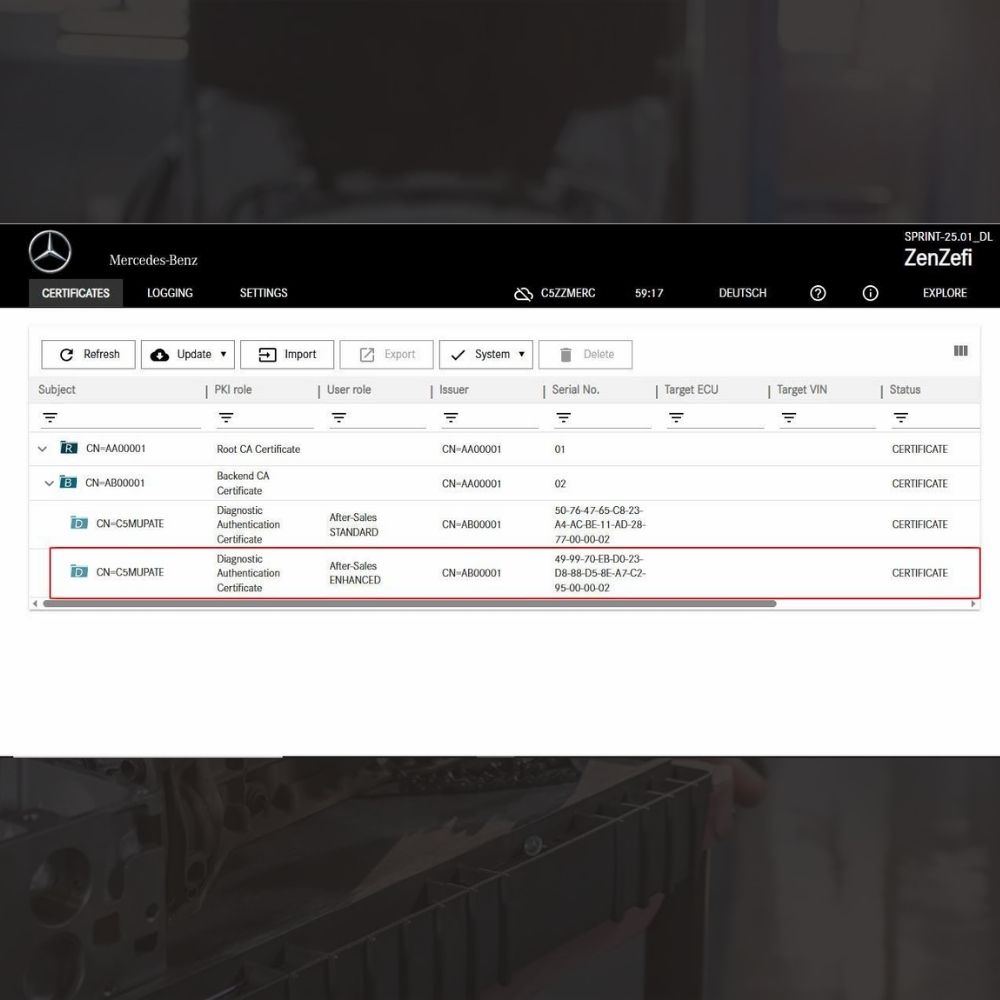
New Mercedes Car Coding Solution with ZenZefi certificate for DTS Monaco 9.02

What is DTS Monaco? Key Functions of DTS Monaco Software
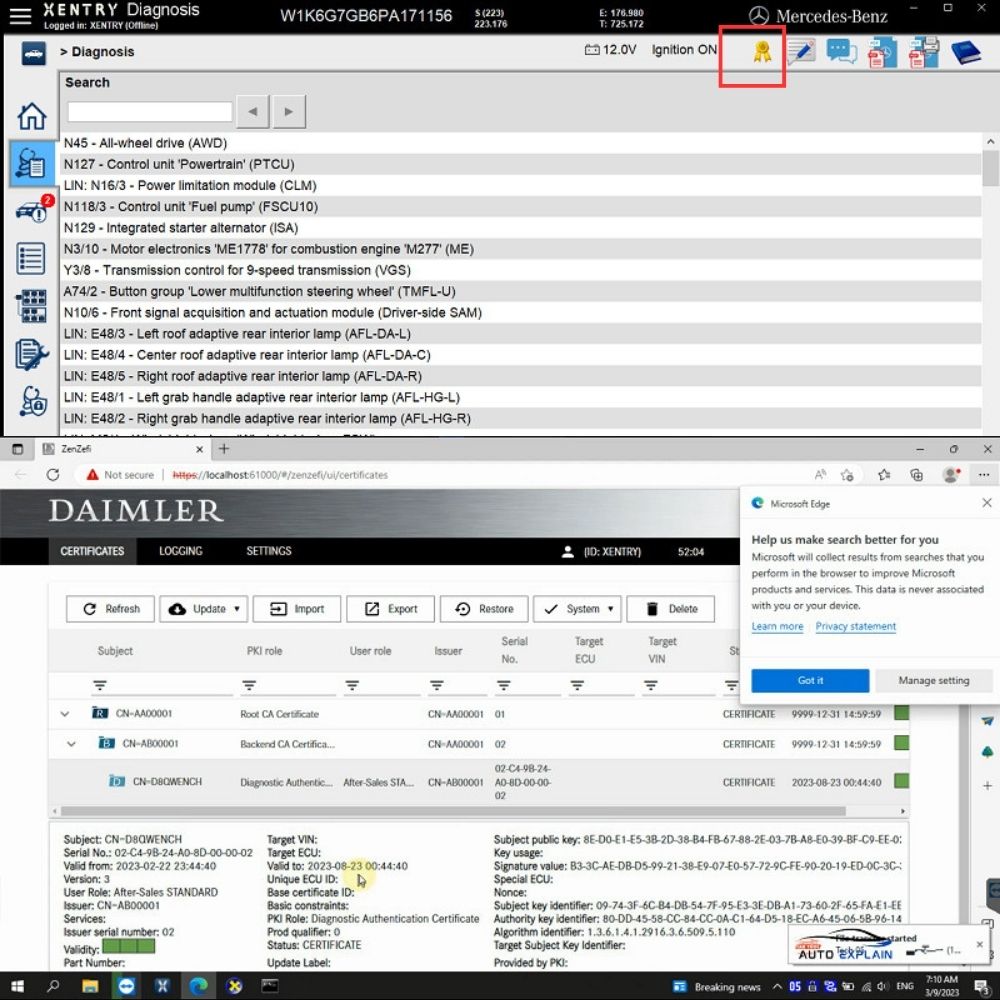
What is the Xentry Certificate Zenzefi? Why You Need It, and When It Is Required?



New Mercedes Car Coding Solution with ZenZefi certificate for DTS Monaco 9.02



